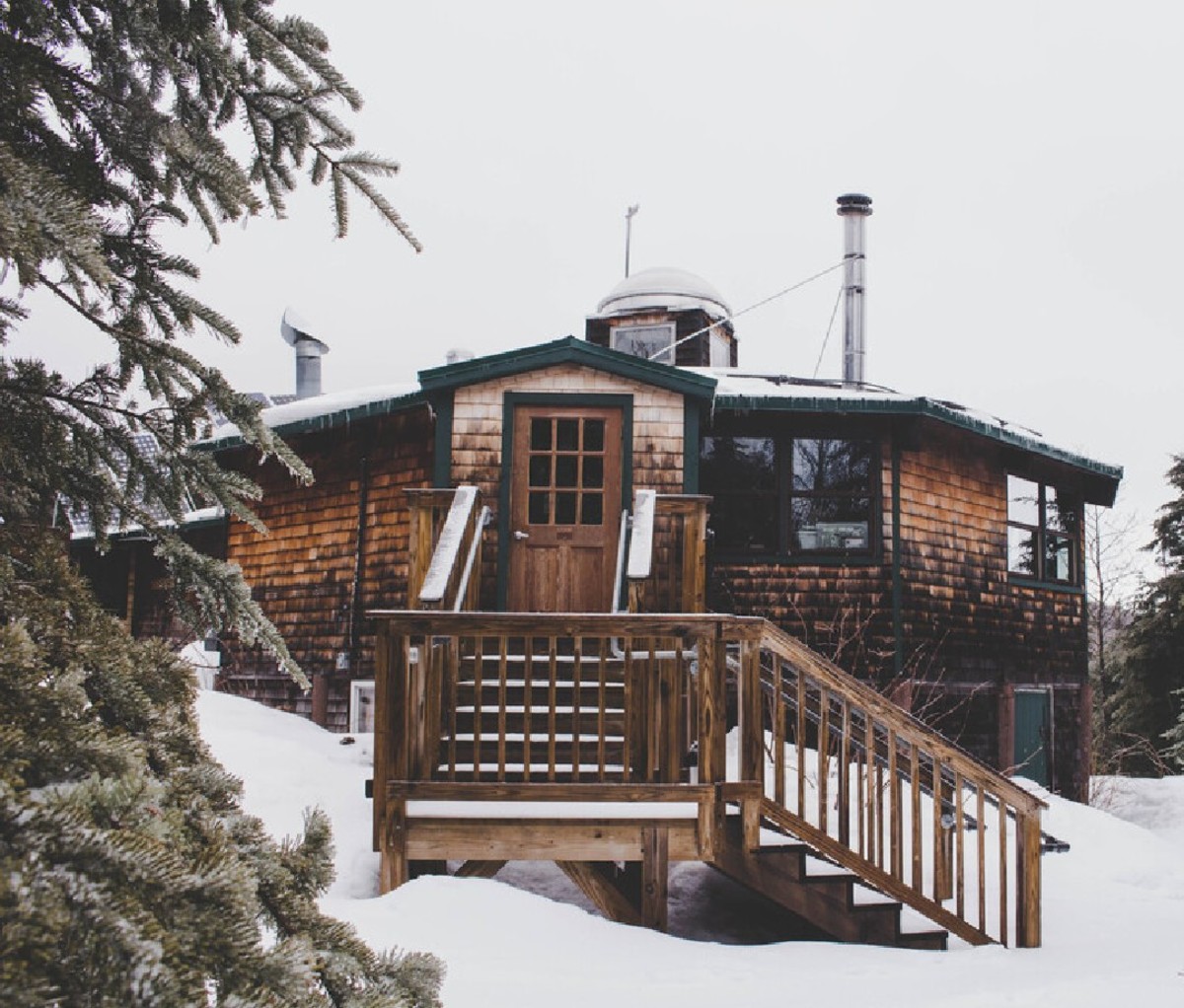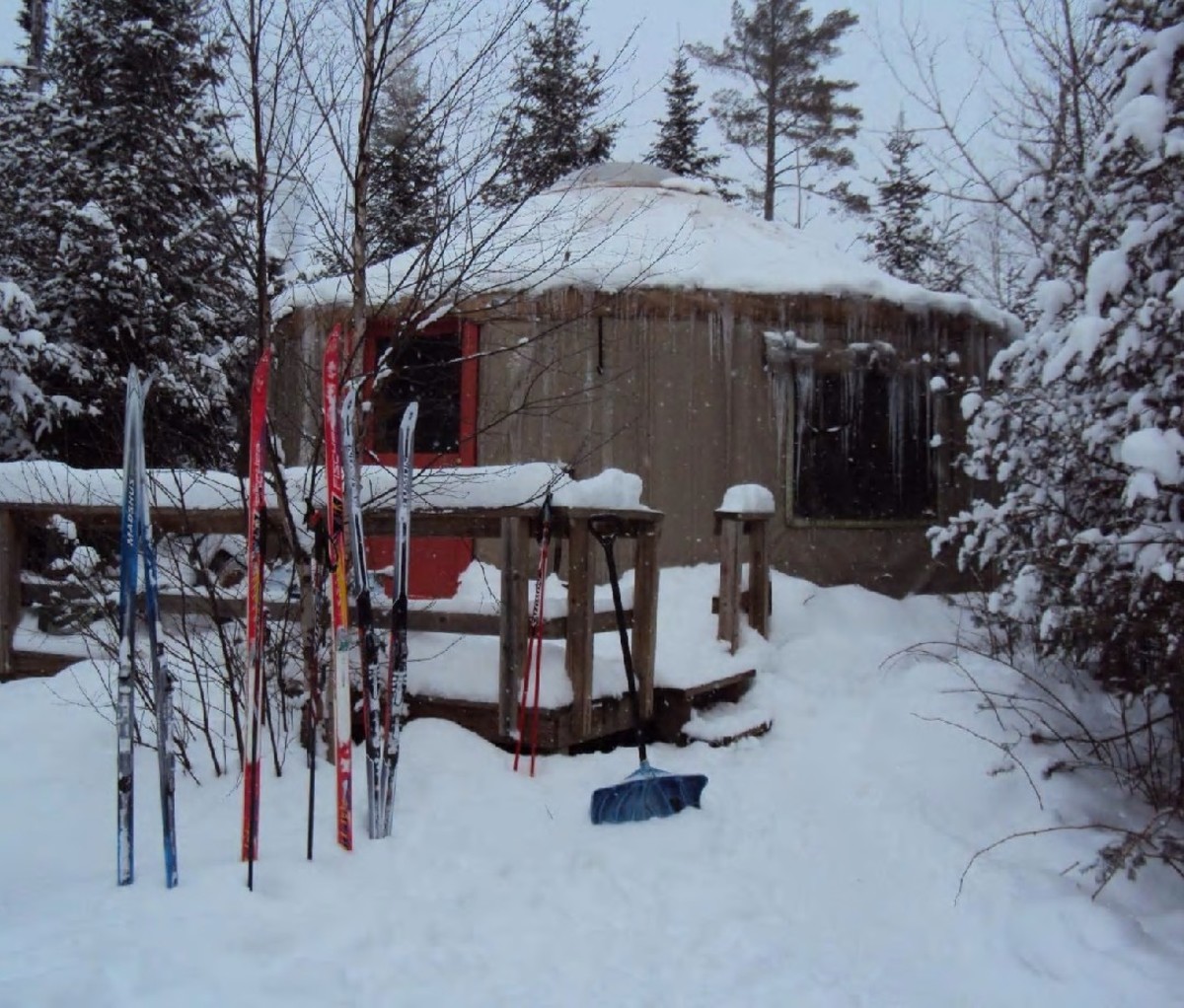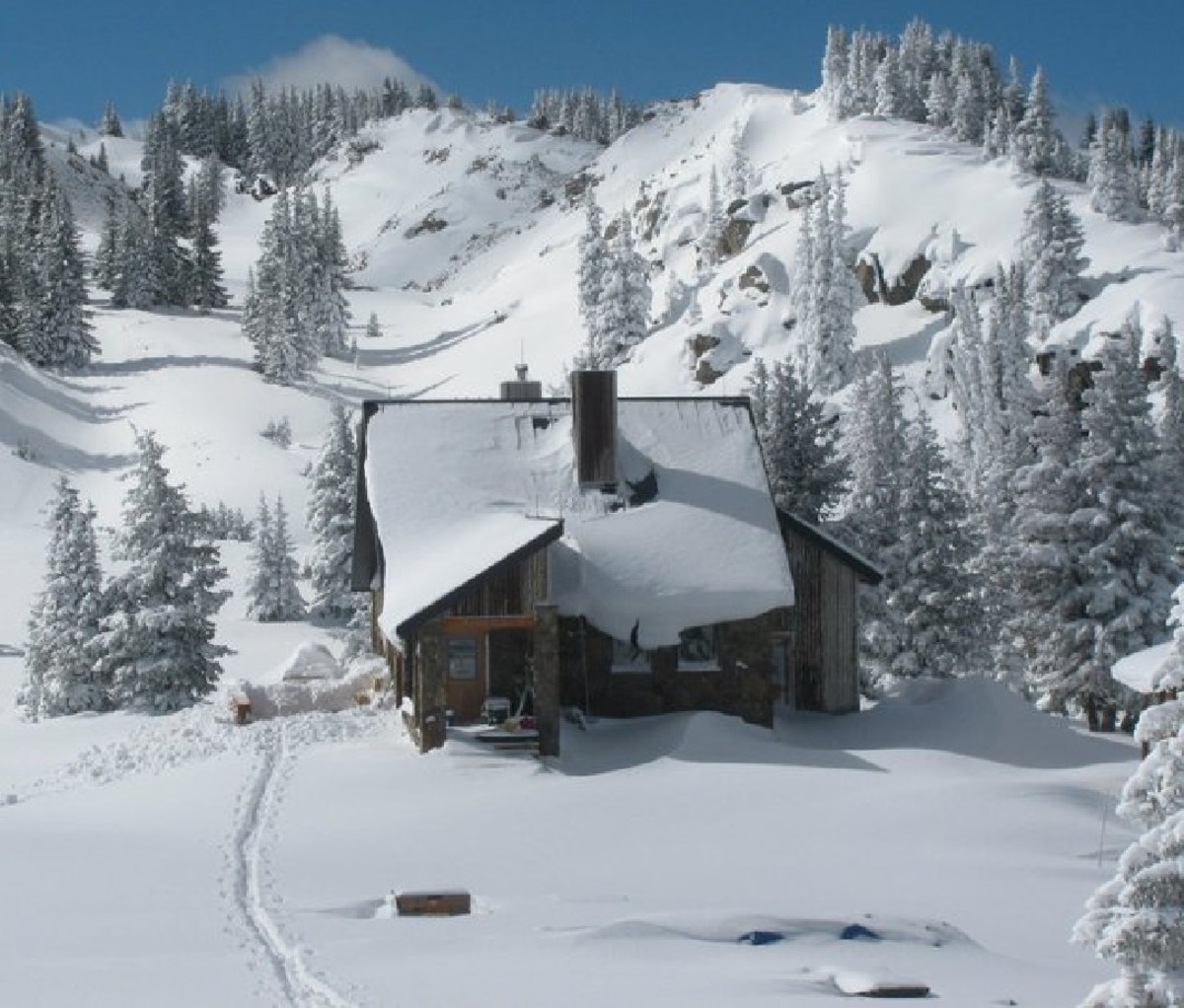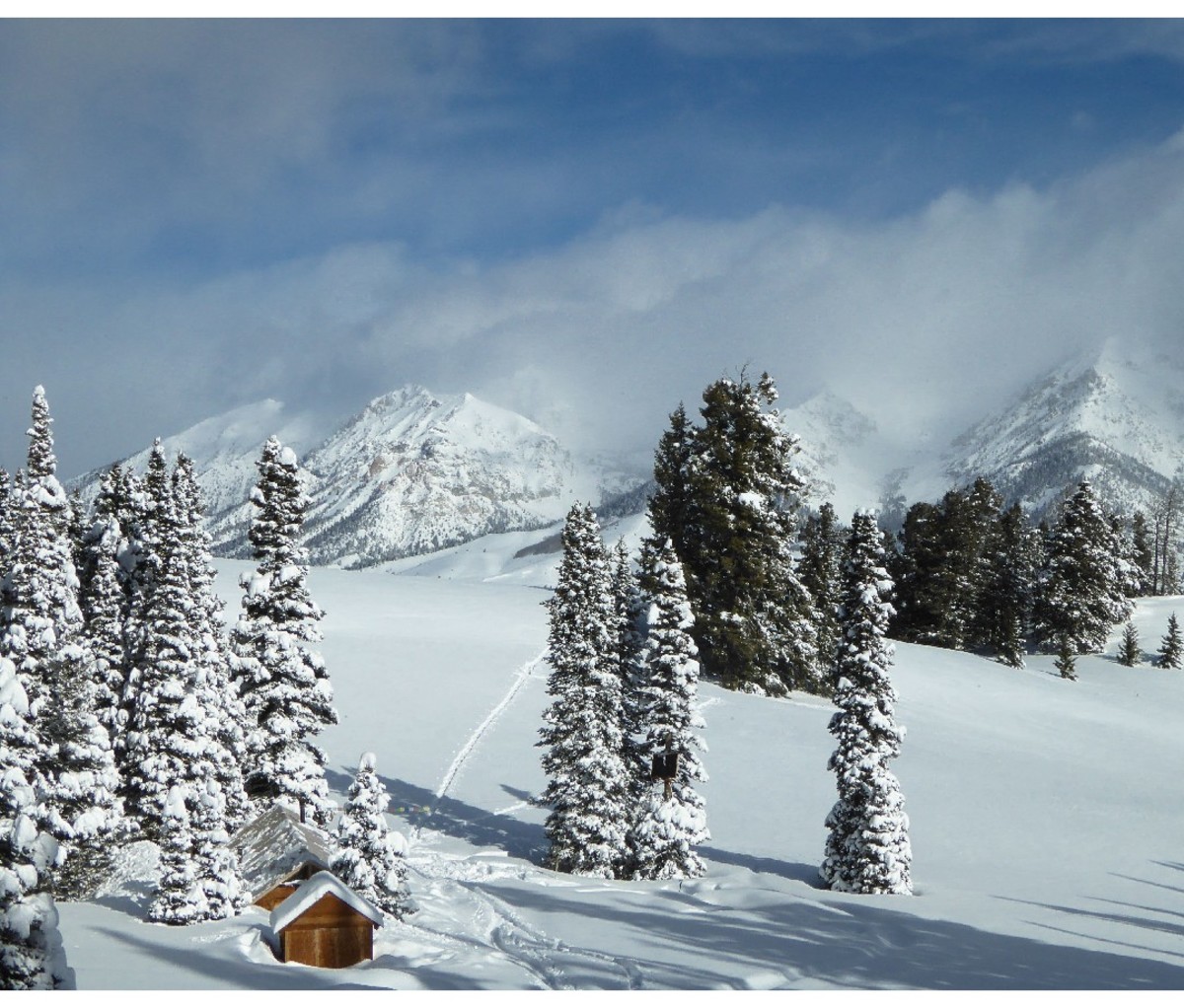[ad_1]
If you can’t make it to the European Alps this winter, the good news is that there are plenty of domestic options for skiing, hiking, and even fat biking far from the winter resort throngs. Thousands of remote yurts, huts, and backcountry lodges are spread throughout your favorite mountain meccas from coast to coast. Many are set up to experience that classic Euro-style, hut-to-hut adventure.
Backcountry hut travel provides a chance to commune with nature, get exercise, spend quality time with friends, family, and like-minded folks you meet along the way—and, of course, sleep in spectacular hideaways far off the beaten path. Then there’s the savings. The cost per person ranges from about $15 to $120 per night. Compare that to your average ski lift ticket alone.
Hut trips take some planning—starting with knowing exactly where these places are hiding. For the first comprehensive look at U.S. hut systems in print, check out Hut To Hut USA which focuses on 16 multi-hut systems, dozens of smaller options, specific itineraries for multi-day trips and everything you need to know to get started.
Most hut systems are in the West, but New England offers the lion’s share of beds as these huts tend to be bigger and more communal—some of them qualifying as backcountry lodges. Whether you head to New Hampshire’s White Mountains, the Washington and Oregon Cascades, or Colorado’s Rockies, there’s a hut adventure waiting for you. Most of them are heated with firewood or propane, sport outhouses, and rely on melted snow for water. An increasing number of them are solar powered. Due to the pandemic, some huts must be booked in their entirety while others offer individual bunks.
Many of these hut systems offer experienced guides who’ll not only help you navigate between huts, but also shuttle food, cars, and even do the cooking. Visit hut2hut.info for more information on the whole hut experience. For our own top picks, check out these idyllic hut-to-hut options from Oregon to Maine for your next wild winter adventure.
Maine Huts and Trails
Located in the Sugarloaf Mountains near Kingfield, Maine, the flowy trails and gentle inclines here are far more accessible than Appalachian Mountain Club (AMC) territory below. You can expect easy to moderate, well-maintained Nordic routes that access three large, cozy backcountry lodges open year-round. Grand Falls, an additional remote cabin, is closed this season but will open in the summer. “Full-service” options are available Thursday, Friday and Saturday nights. Otherwise, pack in and cook your own food—with some extras (spices, pasta and alcohol) purchasable on-site.

Nestled in New Hampshire’s White Mountains National Forest, Lonesome Lake Hut is one of several backcountry huts managed by the Appalachian Mountain Club. Emily Davenport
The Appalachian Mountain Club
The AMC built its first hut in 1888, so they have hut-life dialed. Of the club’s eight huts spread across the mountains of Maine and New Hampshire, Lonesome Lake Hut, Zealand Falls Hut, and Carter Notch Hut offer excellent winter hiking. They also provide intimate access to miles of trails traversing exposed mountain ridges, high peaks, and dense forests. Terrain is rugged, so plan for ample time between the trailheads and each hut. While the huts are full-service (two meals a day) during summer months, they’re self-service in the winter so you’ll need to bring your own supplies.

Boundary Country Trekking’s yurts in Minnesota’s Superior National Forest offer winter access via skis, fat bikes and snowshoes. Courtesy of Boundary Country Trekking
Boundary Country Trekking
The Boundary Waters in Superior National Forest, Minnesota are a paddling paradise in the summer, but Nordic skiers know that winter months (no bugs) are the best time to visit. Boundary Country Trekking operates two yurts—14 beds total—as well as shuttles for gear and food. Toasty-warm sleeping bags and liners are provided, but pack thick mittens, neck gaiters and plenty of layers. Trails are groomed and winter access is via skis, fat bikes and snowshoes.
San Juan Huts
These southern Colorado huts allow all-season access to some of our country’s most rugged backcountry terrain. There are six backcountry winter huts, distanced about 10 miles apart for self-supported travel. Five of them can be combined for a full tour along the Mt. Sneffels Traverse from Telluride to Ouray (a gold-standard for backcountry skiers) or accessed separately while supporting all levels of skiing. Alpine touring (AT) gear is a must, as is a working knowledge of snowpack and winter survival skills. End your trip with a soak in the Ouray Hot Springs.
Never Summer Nordic
This system of ten huts (eight yurts and two cabins) is a good bet for novice skiers. Situated in the Medicine Bow Mountains near Walden, Colorado in State Forest State Park, the huts are four to five miles apart and well-suited for families. You’ll find wood stoves, bunk beds (some double-wide), and cooking supplies.

Perched at 11,500 feet elevation near Colorado’s Vail Pass, the Fowler/Hilliard Hut is a popular winter hideaway in the 10th Mountain Division Hut system. Curt Carpenter
10th Mountain Division Hut Association
The 10th Mountain Division Hut Association includes more than 36 huts (13 of them are directly operated by the 10th Mountain Division), including the Summit huts, Grand Huts, Braun & Friends Huts, and privately owned properties. All are in Colorado. You can book a single hut for your base camp or turn your trip into a more adventurous multi-hut adventure by linking sites. Expert skiers with significant backcountry snow travel experience should consider the Braun Huts in the Elk Mountains between Crested Butte and Aspen, CO. Hire a guide if you want help with packing food, route finding, and snow safety. Paragon Guides out of Vail and Aspen Alpine Guides both run first-class trips. Check out 10th Mountain’s forum for last-minute booking opportunities.
Southwest Nordic Center
Colorado huts near Denver book up fast on weekends, so consider heading toward the southern San Juan mountains on the New Mexico border for a more relaxed experience. Each of these four yurts offer six beds along with spectacular views of Chama River Valley. The snowpack is reliable, the scenery sublime, and there’s plenty of touring, bowl skiing, and ridge traversing into broad mesas. The homey yurts are all self-service, furnished with a three-burner propane cookstove in the kitchen and plenty of firewood. Skiing is intermediate with some steep terrain.

Off the beaten track in Idaho’s Sun Valley, Tornak Hut is equipped with solar-power lighting, wood and propane stoves, and a wood-fired sauna. Courtesy Image
Sun Valley Mountain Huts
Idaho’s backcountry might be one of the best kept secrets in skiing, including several near the famous resort Sun Valley ski resort—but a world apart. You can visit the SV Mountain Huts on your own or plan a fully-catered, guided experience with snowmobile support. On your first visit you’ll need to hire a Hut Host who’ll guide you in and provide invaluable information about hut life, snowpack, and touring options. All of the six huts here have either a wood-fired sauna or hot tub. You can string together several huts for a multi-day traverse or book a single location for base-camping. AT gear is recommended as the bowl skiing is excellent. The Tornak Hut is snowmobile accessible with a barrier-free interior for handicapped access.
Wallowa Alpine Huts
Oregon’s Eagle Cap Wilderness in the Wallowa Mountains of northeastern Oregon is well-deserving of its “Little Switzerland” moniker. This vast, mountainous area is home to some of the best untracked bowl skiing in the country. You’ll need alpine touring or telemark gear and skins—and you can book either fully-catered or self-supported trips. Your best bet is to hire a guide as the powder is plentiful and avalanche danger real—complete with bowls galore and abundant glade skiing. There are four huts but they aren’t connectable for a traverse. The Wind Ridge and Big Sheep huts have wood-fired saunas.
Three Sisters Backcountry
To avoid the crowds at Oregon’s Mt. Bachelor, consider heading deeper into the Deschutes National Forest Backcountry—furnished with two huts open from mid-December through mid-April. The ungroomed, 22-mile traverse takes you through thickets of mountain hemlock, lodgepole, and ponderosa pine, across frozen lakes and up low-angle slopes. This three-day, two-night adventure is best done with Nordic or AT skis on a seven-mile slog to the first hut—then another seven miles to the second. The owners resupply the huts via snowmobiles. All huts include provisions—Mexican or Italian food, and ample beer.
Rendezvous Huts
These five huts in Washington’s Methow Valley offer 125 miles of groomed skate and classic ski trails tracking through rolling hills, wide valleys, and evergreen forests. Each of the huts are self-service and sleep 8-10—but you need to rent the entire space so plan on bringing friends. The snow is generally plentiful and dry, compared to the western side of the Cascade Mountain range. Huts are between one and six miles apart, so you can do a ski-in, ski-out for a night or two or a multi-hut trip. Three of the huts—and more than 30 miles of trails—are dog friendly.
Helpful Hut-to-Hut Pointers
- Bring alternative forms of maps. GPS-based apps are convenient, but electronics and Wi-Fi connections aren’t always dependable. Pack a paper map and a compass.
- Many of the ski-accessed huts are in serious avalanche terrain with trails that are not marked or maintained—and no ski-patrol. Winter survival skills are essential.
- Let someone know where you’re going and when you plan on returning. Self-sufficiency is key to most hut experiences.
- Know the distance between your car and each hut—as well as the type of terrain you’re going to cover. Two to three miles may seem like a walk in the park, but it can be brutal in a blizzard.
- Make sure you’re comfortable with your planned mode of travel. If you’re planning on using AT (alpine touring) skis and skins for the first time, practice before your trip.
- Keep in mind that elevation and vertical gain make a big difference when you’re human-powered.
- Hire a guide. If you’re new to hut trips and heading into potentially treacherous terrain, going with a qualified guide is a smart idea and will help you learn the ropes the easier way.
- Be prepared to bail if the weather and conditions make backcountry travel too dangerous.
- Use a hut trip as a reason to get into shape—beforehand. Set up a training program in advance.
For access to exclusive gear videos, celebrity interviews, and more, subscribe on YouTube!
[ad_2]